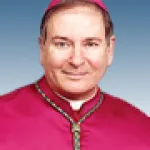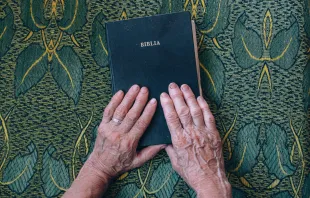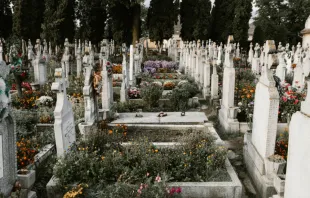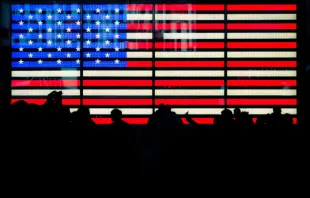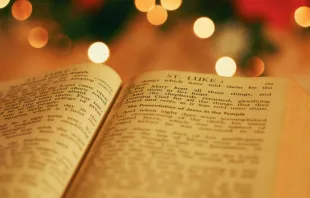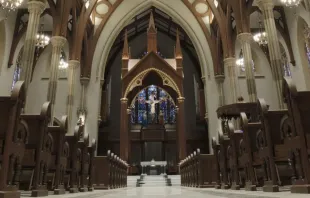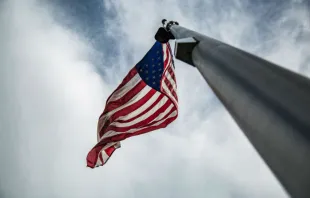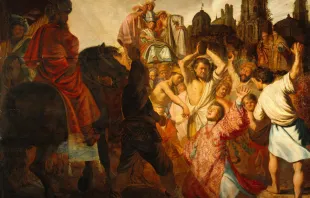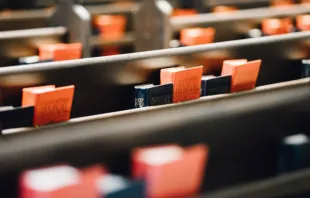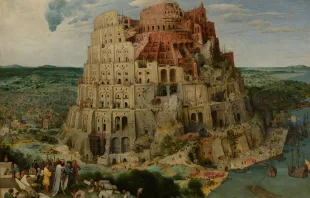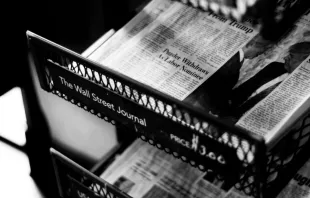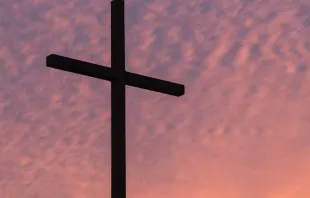Articles by Bishop Arthur Serratelli
The New Year and Tradition
Jan 1, 2018 / 00:00 amOut with old, in with the new! That is literally how some people welcome in the New Year. In some parts of Italy, especially in the south, Italians have the custom of throwing old things out the window, especially old pots, pans, plates and any other unwanted items. A grand gesture to let go of the past! Ecuadorians are somewhat more creative. They take old clothes, stuff them with straw and make them into effigies of the old year and then burn them on New Year’s Eve. At the stroke of midnight, from Samoa to California, sirens, fireworks, horns, bells and every other sort of raucous noise bid a strong farewell to the old year. People raise their glasses of champagne, prosecco, or sparkling apple cider and toast a hardy welcome to a new year. With the turning of the calendar from December to January, everyone looks forward to a better future. Nonetheless, all the cheers and good wishes of our New Year’s celebrations cannot change reality. We are the same person the first day of a new year as we were on the last day of the old year. There is no radical break in our lives when the Times Square ball makes its sixty-second descent, marking a new year. The fact that something is new does not make it any better. We can become so enamored with change that we run the risk of losing a sense of stability. Not every change in society is progress. We should hail the advances in medicine that allow doctors to operate on some infirm babies in utero and bring them to term. We should hang our heads in shame that we allow other doctors to take away a child’s life in its mother’s womb. “Although there is no progress without change, not all change is progress” (John Wooden). Is the loss of a common understanding of the natural law progress? Is teaching young children that they choose their own gender really a help to them? Is the loss of biblical morality a step forward? Or is it a slippery road to Neolithic barbarity? There have been many efforts at social and cultural change since the 1960s. But, most Americans are no happier than they were fifty years ago. Disappointment with certain government officials or policies has led some to disrespect our flag, burning it, trampling it, not saluting it. However, when some exercise their constitutional right of freedom of speech in this way, we are the less for it. We become a house divided. More and more young people are not voting in our elections. Political opponents are more and more vilifying each other with rude remarks. Could this be because we have failed to pass on a basic understanding of American heritage and history, values and form of government? In a sound society, there is a need for balance between individual choice and the common good. “And how do we keep our balance? That I can tell you in one word... Tradition” (Tevye in Fiddler on the Roof). Tradition is not a bad word. All disciplines of knowledge depend on tradition, the handing on of the knowledge of the past from teacher to student. Faith, itself a gift from God, is nourished and sustained by Tradition. The Church is not free to discard or change the teaching of Jesus. The Holy Spirit guides the Church that, from one year to the next, she faithfully hands on to believers the teaching of Jesus, whole and entire and undiluted because of our inability to always live his teaching in our lives. Tradition provides a sense of identity. It fosters rootedness in a community. Shared moral values and regular attendance at church keep families united and hold a nation together. We need to recover a healthy sense of tradition in society and in the Church.
The elderly: respected and valued by God
Dec 8, 2017 / 00:00 amEach year, Christmas gives the biggest economic boost to our economy. To celebrate the day, over eighty-six percent of Americans purchase gifts for family members and friends. Holiday sales exceed one trillion dollars. However, the big winners in this frantic holiday spending spree are our young people. On average, most children receive anywhere from three to eight gifts and sometimes even many more. We are a society preoccupied with youth. Entertainment, fashions, and fast food industries cater to the taste of the young. Commercials capitalize on looking young to sell their products. Our culture projects the illusion that life ends before forty. With such great emphasis on youthfulness, it makes aging undesirable and something to be disguised. In the past half-century, thanks to the progress of medicine, lifespans have increased. The average life expectancy is seventy-eight years old. In the next twenty-five years, the elderly population will increase by nearly eighty percent. As the traditional extended family vanishes, the elderly among us are increasingly seen as a burden and not a blessing. “In the West, scientists present the current century as the aging century: children are diminishing, the elderly are increasing. This imbalance challenges us, indeed, it is a great challenge for contemporary society. Yet a culture of profit insists on casting off the old like a weight” (Pope Francis, General Audience, March 4, 2015). A quick glance at the Christmas crèche could lead someone to think that Christmas was simply about young people. Mary, a teenage mother. Her young husband Joseph. And, a newborn baby. Eternally youthful angels. But, a reading of the entire Christmas narrative shows how important the elderly were for the birth of Jesus. Luke sets the stage for the birth of Jesus by centering our attention on Zechariah and Elizabeth, a pious couple related to Mary and well on in years. God likes to call the elderly in service to his work of salvation. Moses was eighty and his brother Aaron was eighty-three when called to lead the Hebrew slaves out of Egypt. In fact, when God wanted to form the Chosen People, he began with an elderly couple. He called Abraham who was close to one hundred and his wife Sarah who was ninety. Not only were Abraham and Sarah on in years, they were also childless. Yet, God promised Abraham that Sarah would conceive and bear a son and Abraham would become the father of many nations. God intervened; Isaac was born, and there began the generations of faith that led to the covenant with God on Sinai. Thus, from the loins of Abraham, the aged patriarch, and his barren wife, there sprung hope for salvation. St. Luke deliberately begins the Christmas narrative not with Mary and Joseph, but with Zechariah and Elizabeth. They embodied the piety of Israel. They were righteous and kept the laws of the covenant, living in expectation of the coming of the Messiah. And, just like Abraham and Sarah when God offered them a most important role in the drama of salvation, Zechariah and Elizabeth were also elderly and without child. Fifteen months before the birth of Jesus, Zechariah, a descendant of Aaron, went to the temple to carry out his priestly duties. In his day, there were about seven thousand priests serving in the temple. Zechariah was chosen by lot one morning to offer incense. A coveted privilege. As Zechariah entered the sanctuary of the Temple to perform his duty, he was well aware that this was a once-in-a-lifetime occasion for him. His turn had come and he would no longer be involved in the drawing of lots for this office. At the time of the incense offering, the entire Temple hushed into silence. In the outer courts, the devout bowed in prayer while others outside of Jerusalem gathered in their synagogues to pray. When Zechariah took the incense made from eleven different spices and flung it on the fire, he held close in his heart his own prayer for a child. The sweet-smelling smoke immediately enveloped the Holy Place. Suddenly the angel Gabriel appeared standing at the right side of the altar. Even more startling than the sight of the angel was the angel’s message. Gabriel told the old man that his prayer for a son was answered. Elizabeth would bear a son. Gabriel informed Zechariah that his son would be no ordinary child. Like the judge Samson and the prophet Samuel, he was consecrated even before his birth for an extraordinary mission. The angel even gave Zechariah the name “John” for the child. This name means “God is gracious.” Certainly, in giving Zechariah and Elizabeth a child in their old age, God was truly gracious. But, more than that, John’s very name announces the new dispensation of grace to be inaugurated with the birth of Jesus. In both Old and New Testament times, God chose the elderly to usher in something new and extraordinary. In Abraham and Sarah, in Zechariah and Elizabeth, age only served to highlight the miraculous. God overcame the barrenness of the women and the agedness of their husbands. God did not discard their wisdom that came with age nor their faith that had been tested and proved. He valued their virtue and their hope. Like the patriarch Abraham and his wife Sarah and like the priest Zechariah and his wife Elizabeth, the elderly today are a link to the past and the bridge to the future. They are the depositories of great wisdom and faith. The elderly “represent the roots and the memory of a people. … [Their] maturity and wisdom, accumulated over the years, can help younger people in search of their own way, supporting them on the path of growth and openness to the future. The elderly, in fact, show that, even in the most difficult trials, we must never lose confidence in God and in a better future” (Pope Francis, Address to Grandparents, October 15, 2016). The genuineness of our society will always be judged by the way in which we respect and honor our elderly. God does not cast them aside. In fact, he has given them most important roles in the life of faith and in his plan for salvation. He respects and values the elderly. How can we do less?
The commercialization of cremains: a challenge to faith
Nov 30, 2017 / 00:00 amIn the center of modern Rome, on the banks of the Tiber, there humbly rises a dilapidated ruin that once stood as a proud building of Imperial Rome. It is the Mausoleum of Augustus. The Greek historian Strabo records that Augustus, the first emperor of Rome, built this structure in 23 B.C. to house his remains and those of his family when they died. This funerary monument is second in size only to the Egyptian pyramids. It preserves the cremated remains of the Emperors Augustus, Tiberius, Claudius, Vespasian and Caligula. The Mausoleum of Augustus stands in witness to the desire of pagan Rome to honor its dead rulers. From beneath the dust of centuries, the memory of these buried dead rise from the mausoleum’s cavernous interior and hover over this hallowed ground. They are not forgotten as individuals who lived and died and then passed to the other side. Ever since the late twentieth century, more and more people are opting for cremation as a form of disposing the human body in such a way that their memory is lost and no longer honored. All too often death is seen as a “dead end” with nothing beyond. As a result, the human body is seen merely as something that once was but now should be recycled back into nature. Bereaved relatives are now choosing not to bury their loved one’s ashes. Rather, they spread the cremains of their deceased on mountains, in rivers, at sea, in their gardens or just about any other place that may have been significant to the dead person at one time or another. Some even turn their dead relatives into fertilizer to be put at the base of a tree. Today, there are so many commercialized ways of disposing of the dead person’s body. Jewelry containing the remains. Vinyl records made from cremated ash. Biodegradable balloons filled with human cremains released into the sky. Fireworks from cremated ash celebrating the departed as a blast of light. Or even diamonds forged from cremains. Cremation is quickly becoming a commercialized industry catering to consumer choice. As Christians, our beliefs shape our conduct. And, most certainly, the way in which we bury our beloved dead not only should honor them, but it should also express our faith. We are more than matter. We are body and soul. As individuals, we are an integral whole. Our very bodies, washed clean in the waters of Baptism, are the temple of the Holy Spirit. We love God and our neighbors not as disembodied spirits, but as body and soul. When we die, we do not cease to exist. At the moment of death, our souls stand in judgment before God. Our body returns to the earth from which it was made, as we await the resurrection of the dead at the end of time. On the last day, “Christ will raise our mortal bodies and make them like his own in glory” (Funeral Liturgy; cf. Phil 3:21). Therefore, the body of a dead person is not to be discarded like an old garment. Nor is it to be disposed of as something with no value. Death is not the annihilation of the person. When cremation is the preferred choice of burial, the cremains should never be scattered. This very action only serves to obliterate the concrete, personal identity of the individual. Because a person does not cease to be at death, their cremains are to be respectfully interred in a tomb or placed in an urn with their name. Keeping the ashes of a dead person at home only hinders the grieving process. It also fails to respect the fact that each of us belongs to a wider community than our immediate family or friends. At death, we are called from our limited circle of family, friends and acquaintances to join the vast community of all those who believed in God while on earth and now live with him in heaven. Our cemeteries serve to remind us of this communion of life that goes beyond the grave. Placing the ashes of our beloved dead in a cemetery keeps their memory alive, even after those who knew them have long passed away. The respect which we give to the bodies of our dead expresses our love for them. The honor which we give their bodies binds us to their departed souls in a bond of love that defies death itself and affirms our faith in the resurrection. Thus, our Christian understanding of death should distance us from the commercialization of cremains.
Thanksgiving: life to the fullest
Nov 23, 2017 / 00:00 amLike the pilgrims who gathered with their neighbors at Plymouth Rock after their first successful harvest in 1621, the early American colonists celebrated days of thanksgiving. When a drought ended or a war won, they would set aside a day to give thanks for the favorable outcome. For example, after the victory over British forces in the Battle of Saratoga in 1777, the Continental Congress declared a Thanksgiving holiday. The thirteen original colonies stopped their ordinary routine in order “to acknowledge with gratitude their obligation to [Almighty God] for benefits received, and to implore …farther blessings…” Two years after the signing of the Constitution of the United States, on September 28, 1789, Congress formally asked President George Washington to name a national day of thanksgiving. It was Elias Boudinot, a statesman from New Jersey, who introduced the resolution for this first national Thanksgiving Day. It was to be observed as a day of prayer “… acknowledging, with grateful hearts, the many signal favors of Almighty God, especially by affording them an opportunity peaceably to establish a Constitution of government for their safety and happiness.” Wasting no time, five days after receiving Congress’ resolution, Washington designated Thursday, November 26, 1789 as that day of thanks for the blessings which God bestowed on our country. The tradition of celebrating such a day of thanks continued after that first national holiday. But, not all the states observed their Thanksgiving on the same day. In the midst of the bloodshed of the civil war, President Lincoln harkened back to the example of the nation’s first president. However, he declared not one, but two Thanksgiving celebrations. The first was on Thursday, August 6, 1863 to commemorate the Union’s victory at Gettysburg. The second was a nationwide holiday, to be observed on the last Thursday of every November “as a day of Thanksgiving and Praise to our beneficent Father who dwelleth in the Heavens.” Eventually, President Roosevelt standardized the celebration of Thanksgiving. On December 26, 1941, he established the fourth Thursday in November as the Thanksgiving Day holiday for the entire country. Thanksgiving is in the life blood of America. From the very birth of our nation until today, Americans have set aside a day to express their gratitude to God for his goodness to us. As our first President so wisely proclaimed, “… it is the duty of all Nations to acknowledge the providence of Almighty God, to obey his will, to be grateful for his benefits, and humbly to implore his protection and favor…” On a natural level, an attitude of gratitude contributes to our mental health. Our consumer culture fosters the illusion that the more things we possess, the greater will be our happiness. But, the drive to have more and more things only makes us restless. It cannot make us happy. However, gratitude for what we do have actually improves our well-being. It helps us enjoy our lives and form strong relationships with others. If we are not grateful, then, no matter how much we have, we will not be happy. We will always want to have something more. In truth, there is nothing that we possess that has not come from the generous hands of God. There is nothing that we have earned or merited except by the wise disposition of God’s providence. When we thank God for his blessings, we acknowledge him as the source of all that is good. Such gratitude places us in the right relationship with God. As the Psalmist reminds us, “Those who offer a sacrifice of thanksgiving honor me” (Ps 50:23). Each year we pause as a nation to celebrate Thanksgiving. We take count of our many blessings. Freedom. Family. Friends and Faith. Sorrows and hardships touch all our lives. Yet, each of us has many reasons to be thankful. As followers of Jesus, we heed the encouragement of St. Paul to “pray without ceasing, giving thanks in all circumstances…” (1 Th 5:16-17). For a grateful heart turns even the simplest meal into a feast and makes us live in peace with our neighbors. Thanksgiving is not just a day. It is the way to live life to the fullest.
Hell: a most unpopular idea
Nov 1, 2017 / 00:00 amFor the last twenty-five years, the moral landscape of our country has been changing. More and more people argue against the death penalty as a legitimate form of justice. Some strenuously argue that every individual has the right to determine when and how to end their life. Divorce has become more common. Many now accept cohabitation before marriage as an acceptable preparation for marriage. And, activist groups have been able to alter our laws to reflect their agendas on family, human life and the very notion of the human person. In such an environment, it is no surprise that more and more people are no longer comfortable with the idea of hell. Actions and choices that once were accepted as sins are now presented as morally good. When sin is no longer seen as sin, any consequence for sinful acts is sidelined, most especially any punishment beyond the grave. As a result, only about half of Americans believe that hell is the fate of those who live morally evil lives. Fifty years ago, when the distinctions between good and evil were sharper, it was certainly much easier for preachers to speak of the eternal consequences of serious sin. But, ever since the moral teaching of Christians has been blunted in some theological circles, preachers have consistently steered away from ever mentioning from the pulpit any doctrine that makes people uncomfortable in the pews. Religion, for some, has become a therapeutic moralism for happy living. Involvement in social issues, good in itself, has moved center stage and has gradually diminished the spotlight on individual sin. Some preachers across the lines of church affiliation concentrate their teaching solely on the love of God. This truth can never be emphasized enough. But the whole preaching of Jesus cannot be limited to one truth. The sheer number of recent bestsellers on heaven and hell reveal a keen interest in the afterlife on the part of many. In speaking of hell, we should not be distracted by any caricature of hell as the place where the wrath of God is unleashed in fiery flames on sinners. Even beyond rejecting this understanding of hell, many have serious difficulty in reconciling the biblical teaching of an all-loving God who sends his Son to save us with any concept of a God who allows sinners to be punished for all eternity for their sins. The early Christians wrestled with this very same problem. In the second century, Tatian taught that “We who are now easily susceptible to death will afterwards receive immortality with either enjoyment or with pain.” Irenaeus, one of the most important theologians of the second century, believed in an eternal hell of suffering for the lost. Origen, a third century theologian, had a more benign view of the afterlife. He taught that the wicked were punished after death until they repented for their sins and then were saved. This doctrine is called universalism and it holds that even Satan will be redeemed in the end. This teaching has never been accepted by the Church. To reconcile the love of God with the justice of God in dealing with those who die in a state of rebellion against God, some Protestant theologians resort to the doctrine of annihilationism. According to this theory, those who die alienated from God are not subject to any kind of eternal punishment. For them, death means the total end. Their very existence is extinguished. They no longer exist. They are not suffering the torments of the damned, nor are they given eternal happiness in heaven. To tell the truth, many people hold the very idea of God judging as abhorrent. God does not judge. He understands. He forgives. He is the indulgent parent whose love means that he always accepts what his child does. But, the corollary to God’s love is his hatred of sin and the disastrous effects sin has on us and on our relationship to him. Speaking of hell, Pope John Paul II said that it is “the ultimate consequence of sin itself … Rather than a place, hell indicates the state of those who freely and definitively separate themselves from God, the source of all life and joy.” Hell, therefore, is not something which God vindictively decides for sinners. Hell is the choice that serious sinners themselves make and God honors their choice. During his public ministry, Jesus spoke more about hell than anybody else in Sacred Scripture. His sayings on hell exceed all the other sayings of the Bible combined! For Jesus, hell meant the eternal punishment meted out to sinners. If speaking about hell mattered so much to Jesus, can we be faithful enough to him by never mentioning hell, even if it is, for sure, a most unpopular idea?
The secularization of America
Oct 26, 2017 / 00:00 amBy year 200 A. D., the Christian faith had spread to most regions of the Roman Empire. However, those early Christians found that their faith was incompatible with the Roman Empire. Of the estimated seven million Christians, as many as two million were martyred for not compromising their faith. The first Christians lived a life that was truly counter-cultural. Their moral values were at variance with those fostered by the state. Abortion and infanticide were widely practiced among every class of people. A woman was subject to her father and then to her husband. She had no legal identity. No woman could vote or hold public office. Freeborn men could have extramarital sex both with female and male partners, as long as they confined their sexual activity to slaves, prostitutes or concubines. Divorce was widely accepted. As Christianity spread, believers rejected these practices on the basis of the gospel. Children were accepted even when born ill. Chastity was promoted. Marriage between a man and a woman upheld. And, the status of women gradually improved. Faith impacted public life for the betterment of society as a whole, making it more civil and more humane. Today we are witnessing a reversal of so many of the basic Christian moral principles that made the first Christians counter-cultural. Our Founding Fathers accepted the moral truths rooted in the Judeo-Christian tradition. But, some people today have rejected wholesale the very idea of moral truth. Instead, they live as if every individual is entitled to his or her own moral truth. The results are frightening. Some people have bought the lie that one’s sexuality is simply a matter of choice and has nothing to do with human nature as ordered by the Creator. The elites of our day are working strenuously to promote this idea. For them, male and female are interchangeable. The New York City Commission on Human Rights now lists 31, that’s right, 31 different gender choices. Harvard University now permits students to choose their preferred gender pronoun, such as “ze, hir, and hirs.” And, the elites tell us that you can change your gender from one day to the next. No common sense! Political correctness gone mad! Everything depends on how someone feels at the moment. No standard outside oneself. All these changes in attitudes and values indicate a profound shift in our culture. We are witnessing the secularization of America. Secularism holds that no religious consideration should enter into the affairs of state, government or public education. Many of our university professors and our judges actively promote the secularization of our society. They zealously work to remove any vestige of Judeo-Christian morality from the public square. The Supreme Court’s decision legalizing same-sex marriage merely put its imprimatur on this secularization that has been happening at an accelerated pace for the last 25 years. Christians rightly distinguish between the secular and sacred. But, this does not mean that Christians should separate their faith and their moral values from their attitudes and behavior. It is naive to think that secularism which declares no religion should enter the public forum is actually a neutral philosophy. In the 1963 Supreme Court decision that banned Bible readings in public schools, Justice Potter Stewart filed the only dissent in the case. As he astutely predicted, “If religious exercises are held to be an impermissible activity in schools, religion is placed in an artificial and state-created disadvantage.... [The] refusal to permit religious exercises…is…not…the realization of state neutrality, but rather…the establishment of a religion of secularism…” Can a committed Christian endorse such a secularization of America?
The internet and freedom
Oct 17, 2017 / 00:00 amModern technology enables us to communicate with each other, search out information and enjoy various types of entertainment with an astonishing speed and convenience. Almost two-thirds of Americans use a smartphone. Sixty-eight percent of them place their smartphone next to their bed at night. And, nearly 30 percent check their mobile device every 30 minutes. We have become people who like to stay connected. Modern technology is reshaping the way in which we communicate, do business or access entertainment. It is also changing us. Surfing the internet, creating work-related documents, using a cell phone, creating an email: all these activities leave behind a trail that leads right back to us. Already in 2000, Harvard Law School professor Lawrence Lessig foresaw the potential of the internet to monitor our every move. “Left to itself,” he said, “cyberspace will become a perfect tool of control.” The world of cyberspace gives others much information about us. Surfing the internet provides marketing companies the ability to catalogue our likes and dislikes. Then, as a result, market-driven advertisements for products and services constantly intrude themselves into our lives. This constant bombardment of suggestions can change our behavior and even diminish our freedom. It can even create the illusion that acquisition of more and more things is the key to happiness. Despite the downside, the internet and cell phones are here to stay. Their benefits are immense. They help parents supervise their children at a distance. They allow homeowners to keep an eye on their homes. They make work easier by allowing employees to work from home. They connect people across international borders. One of the fastest growing functions of the internet is its use as a means for individuals to post their opinions, their political views and pictures of themselves or events. The internet has become an instrument of self-expression. Those who make incessant use of social media seem to be saying that the entire world needs to know and see what they think about every issue or what they are doing at every moment. Such unrestricted use of the internet plays into the inclination to place the users as the center of the universe. In fact, it allows them to create their own virtual world. However, “the new technological utopia [may be] a poisoned chalice” (Charles Howarth, “Technology is Making Us Blind,” Nov. 29, 2014). Imbibing too deeply of this chalice may actually create a false sense of freedom. Freedom is not the ability to do what one wants, to have what one desires or to attain one’s goals immediately or without any type of restraint. This is merely individualism in its most extreme form. Such narcissism leads to casting aside moral standards, moral relativism and ultimately social chaos. Every human person is endowed with the freedom to choose the good, not to invent the good. The moral law, written in nature and given in divine revelation, is far from being a restraint or denial of freedom. Choosing the moral good is the realization of authentic freedom. In our modern digital world, in order to safeguard this freedom, “we need to uncouple ourselves from the seductive devices around us…and rediscover critical distance” (Howarth, ibid.). Time apart from our phones, our computers and the internet, time spent in quiet reflection and prayer, alone gives us the freedom to make right choices for the good.
Obligation in an Age of Rights: Sunday Mass
Oct 4, 2017 / 00:00 amOn Jan. 20, 1961, President Kennedy concluded his inaugural address, the first ever televised in color, with the stirring challenge: “And so, my fellow Americans: ask not what your country can do for you; ask what you can do for your country.” Kennedy’s rally cry for duty to one’s country was not unique. At the 1916 Republican National Convention in Chicago, Warren Harding, later to be elected president, said, “We must have a citizenship less concerned about what the government can do for it and more anxious about what it can do for the nation.” And, even before that, in 1884, Oliver Wendell Holmes Jr., the famous American jurist said, “It is now the moment . . . to recall what our country has done for each of us, and to ask ourselves what we can do for our country in return.” All these leaders appealed to the sense of duty to rouse their fellow citizens to action. However, in the last 40 years, the sense of duty has been gradually vanishing from the American scene. Voting in a national election hit a 20-year low in 2016. Adults under 30 years of age are less inclined to have a sense of civic duty than their peers a generation ago. Today only 28 percent of Americans say volunteering is “a very important obligation.” And, tragically, only a fourth of young people feel an obligation to keep informed about world and national events. In the past, the idea of obligation and a sense of duty were widely accepted. For many centuries, Cicero’s De Officiis (On Duties) trained young people on practical ethics. It was the moral authority during the Middle Ages. In more recent times, the French Enlightenment philosopher Voltaire remarked, “No one will ever write anything more wise.” But, for the last generation, the word “obligation” has slipped away from public discourse. Politicians and world leaders prefer to talk more about rights than obligations or duties. In an age that prioritizes rights over obligations, many seem to be placing their right to leisure, their right to shop, their right to recreate or their right to do as they please over and above their obligation to attend Sunday Mass. Encouraging people to participate in Sunday Mass or Mass on Saturday evening to fulfill their obligation to worship God as mandated by the Third Commandment falls on deaf ears. Because of our cultural context, the word “obligation” has very little impact. So, then, how do we share with others the irreplaceable value of Sunday Mass? Merely to state that there is a serious obligation to go to Mass on Sundays will convince few, if any. Reminding them that deliberately and willfully missing Sunday Mass without a legitimate excuse is a mortal sin will bring hardly anyone back to the Eucharist. Nonetheless, the Church continues to insist on the serious obligation to attend Sunday Mass because of her maternal concern for our own spiritual well-being. From the day Jesus celebrated the Last Supper with his disciples and told them to “Do this in memory of me,” the Church has never ceased to celebrate the Eucharist and to oblige the faithful to participate on Sundays. Each Sunday is the Lord’s Day. It is the day of the Resurrection. Christ’s resurrection is the central event of all time. On his death and resurrection depends our eternal salvation. When we gather for Sunday Mass, we are present with Jesus at the Last Supper. We are with him on Calvary as he offers his life for us. We are made to share in his Resurrection and are already seated at the banquet of heaven. Mass is not just a ceremony, a liturgical service or prayer gathering. It is the sacrifice of the Cross made present in our midst. As baptized into the Church, we are given the right to sit at the Lord’s table, to be nourished by the Eucharist, which is the very Body, Blood, Soul and Divinity of Jesus, and to live even now the gift of eternal life. Choosing to dismiss the obligation of Sunday Mass brings serious harm to our relationship with God and with all other members of the Church. To deprive ourselves or our children of the Eucharist each week is to fail to grow in God’s love. But, fulfilling Sunday Mass obligation brings us into a deeper communion with God, with those who have gone before us and with all the faithful. Participating in Mass is more than an obligation. It is a privilege and gift of grace!
Reason and faith: the guarantee of true freedom
Sep 16, 2017 / 00:00 amWhen the city officials of Charlottesville, Virginia, the hometown of Thomas Jefferson, decided to remove a statue of Confederate General Robert E. Lee from a downtown park, they ignited a nationwide argument about the propriety of honoring heroes of the South’s confederate past. As a result of this controversy, a statue of Lee no longer towers over the city of New Orleans. And the limestone, almost life-size image of Lee no longer graces the entrance to the Chapel of Duke University in Durham, North Carolina. Many adamantly protest any image that reminds them of a time when our national heroes did not respect the dignity of every human person, regardless of race or color. Will their protests eventually bring down the statues of Jefferson who spoke against slavery while owning hundreds of slaves himself? Will Christopher Columbus and Ulysses S. Grant be exiled from New York? If so, then what are we to do with the stone statue of Margaret Sanger in the Smithsonian? Can we legitimately immortalize the founder of Planned Parenthood who was active with the Ku Klux Klan and promoted doing away with races she deemed inferior? The recent mob protests against monuments to our nation’s past should cause us to ask some very serious questions. Do we simply erase our history? Do we choose to forget our past? Are we to replace what was with a revisionist’s view of the facts? Stalin tried that. And, it does not work. The best solution to the social ills that still mar our national character can never be the destruction of our past, but the honest, reasoned understanding of it that inspires the effort to move forward. At the basis of a well-ordered society is a rational approach to living together and fostering the common good. Today’s protests and counter protests, accusations of hatred and bigotry have made it difficult to listen to the voice of reason. Irrational, angry iconoclasm not simply against statues but also against our leaders is making it more and more difficult for those of differing opinions to listen to each other. We are witnessing a great divide in the soul of America. It manifests itself in the angry mobs clamoring to sanitize our past. It stands unmasked in the way the media at times offers us a less than objective reporting of events. The divide is between facts and opinions, between truth and personally held beliefs. It is the divide between rational thought and biased emotion. Tearing down statues and violent riots do not advance rational discourse. And, therein is the challenge we are facing: the need to stand apart from the loud shouts of bigotry, intolerance and hatred on any side of an issue and to think rationally. Is this not the very method used in our science labs? Calm, rational investigation, discussion, argumentation, and judgment is the gateway to truth. It cannot be replaced with emotion, vitriol or, worse yet, the opinion of the crowd. According to Aristotle, one of the world’s greatest philosophers, only humans are capable of thinking and acting according to well thought-out principles. Only humans are capable of taking responsibility for their choices. Each of us is responsible for the truth we embrace or reject. The need to belong, to be accepted, is a basic human need. Made to live in relationship with others, all of us have the intrinsic desire to be part of a community greater than ourselves. As a result, there can be the temptation to simply embrace the commonly held opinions and thus be accepted. Furthermore, it is all too easy to listen to news commentators and accept their opinion or judgment without subjecting it to robust intellectual scrutiny. We owe it to ourselves as thinking individuals to resist that temptation. Through his reading of the history of ancient Athens, James Madison, one of our Founding Fathers, warned about the inherent weakness of a direct democracy. He foresaw that the majority could force its interest over the rest, even at the expense of the common good. That majority may be the more powerful political party at a particular time in our history or the prevalent ideology of our age. We should never simply acquiesce and allow the majority to control our thoughts and behavior. Each of us, whatever our education or age, cannot surrender the duty to think critically, to analyze facts and to make sound judgments. Francis Bacon, the English Renaissance statesman and philosopher, best known for his promotion of the scientific method, once said, “Critical thinking is a desire to seek, patience to doubt, fondness to meditate, slowness to assert, readiness to consider, carefulness to dispose and set in order, and hatred for every kind of imposture.” In our post-Christian age, we witness a growing rejection of a Christian anthropology. The human person is no longer seen as a creature of God, but someone of his or her own making. The present zeitgeist divorces the human person from the wise design of the Creator. An individual’s preferences and choices have become the determining factor of happiness. Our courts and politicians are actively promoting this secular view of the human person. Yielding to this secular propaganda is a form of conformism that closes the mind. In reality, the iconoclasm of our day that seeks to impose one way of thinking on us is an unhealthy distraction from intellectual honesty. We need to be patient with others, especially with those who disagree with us or label us unenlightened or intolerant because of our faith and firmly held principles. As Joseph Ratzinger, the future Pope Benedict XVI, once said, “God, who became a lamb, tells us that the world is saved by the Crucified One, not by those who crucified him. The world is redeemed by the patience of God. It is destroyed by the impatience of man.” God has gifted us with reason. The rational search for truth, done in charity, will always lead to the Truth who alone can bring lasting happiness. As Catholics, we are part of a culture that spans the centuries and has been able to live under so many forms of government and persecutions. We are heirs to a vast intellectual search for truth in every science. Galileo, the father of modern science; Copernicus, first to formulate a comprehensive heliocentric cosmology; Descartes, father of modern philosophy; the monk Mendel, the father of genetics; Pasteur, founder of bacteriology; and, the priest, Lemaître, the father of the Big Bang Theory – just to name a few. Our faith does not destroy reason. It guides and directs it, like a light shining through a fog. Our faith broadens our understanding and allows us to question and come to the full truth about ourselves and the cosmos. Our secularized culture is like a swiftly moving stream, ready to carry us away. “A dead thing can go with the stream, but only a living thing can go against it.” Reason and faith enrich our lives with truth and freedom. As G.K. Chesterton astutely remarked, “[The Catholic Church] is the only thing that frees a man from the degrading slavery of being a child of his age.”
No God, no truth, no civil discourse
Sep 7, 2017 / 00:00 amIn 1835, French sociologist and political theorist Alexis de Tocqueville published Democracy in America, one of the most influential books of the 19th century. Previously, he had spent nine months traveling through the United States studying our religious, political, and economic character. His findings provide much wisdom concerning life in America. He astutely remarked that “The greatness of America lies not in being more enlightened than any other nation, but rather in her ability to repair her faults.” Today, there is a great fault that divides our country. It is the way that we speak to each other in terms of our opinions and judgments. Unfiltered vitriol has come to dominate media reports, public speech and the discourse between political opponents. Anger against less than honest campaigns for public office and rigged debates is destroying basic civility. In fact, many Americans no longer pay attention to politics because of the lack of civil discourse. According to the seventh annual Civility in America poll conducted by Weber Shandwick and Powell Tate with KRC Research, 69 percent of Americans say that we are heading in the direction of crisis in civility. Seventy-five percent of those surveyed blamed politicians for incivility. Fifty-nine percent blamed the media. Cable broadcasts and social media are the two major sources of news about our national politics. Political rage simmers in news commentators, dissecting and interpreting events and people. Too often news is filtered through the biases of those who report it. It is not just the facts. It is propaganda. And, Americans clearly recognize this partisan and sometimes grossly prejudiced reporting of events. The loss of civil speech reveals the even greater loss of respect for truth. Where there is no objective standard, then subjective opinions become a battleground where the powerful force their views on others. Those who disagree are labelled intolerant; their views dismissed without a proper dialogue; and, the most vociferous hyper-partisans rule. The examples are many. When it came to putting into effect a new health plan, mandating coverage for birth control, the Obama administration enforced its ideology on the nation without allowing for any religious exceptions in our pluralistic society. Catholics and evangelicals were ignored. They were labelled unenlightened, anti-women. As the Trump administration promises to reverse the decision of mandating compulsory coverage for birth control, the inevitable outcries claiming that woman’s health is being put at risk only mask the underlying problem. On issues such as health care, immigration, marriage, racial equality and education, there needs to be honest, civil discourse among our politicians and news media. Facts, not just opinions! No demonizing those with differing opinions. Our country needs to put partisan politics and personal ideologies in second place and truth in first place. And, herein lies the issue that we are facing. In his famous Screwtape Letters, C.S. Lewis captured the mood of our postmodern thinking. In his book, the senior devil advises Wormwood, his nephew devil, not to tempt man with the ideas of truth or falsehood. He says, “Your man has been accustomed…to having a dozen incompatible philosophies dancing about together inside his head. He doesn't think of doctrines as primarily 'true' or 'false', but as 'academic' or 'practical', 'outworn' or 'contemporary,' 'conventional' or 'ruthless'.. Don't waste time trying to make him think [in terms of what] is true! Make him think [in terms of what] is strong or stark or courageous…” (Screwtape Letters, p. 7-8). Simply put, objective truth does not matter. If there is no such reality as objective truth, then there is no standard for good and evil. Everything devolves into one’s personal opinion and the stage is set for confusion, bitter debate and, sadly, uncivil speech. “We are now getting to the point at which different beliefs about the universe lead to different behavior. Religion involves a series of statements about facts, which must be either true or false. If they are true, one set of conclusions will follow about the right sailing of the human fleet; if they are false, quite a different set” (C.S. Lewis, Mere Christianity p. 58). Being civil requires the acknowledgement that we are all in search of a truth beyond ourselves and, ultimately in search of God whose goodness determines right and wrong, good and evil. Once God has been driven from the public forum, uncivil behavior becomes the social norm.
A cathedral: more than a beautiful building
Jun 24, 2017 / 00:00 amWhen Constantine legalized the Christian faith with the Edict of Milan in 313 A.D., the Church emerged from Rome’s subterranean cemeteries and moved into the city’s basilicas. In these buildings, courts of justice were held as well as other public functions. In the basilicas of imperial Rome, the apse, located at the farthest point opposite the main entrance, was the seat of authority. Here the magistrates would sit in judgment. Here the emperor would be enthroned. Because of the importance of this space, the early Christians transformed the apse into the sacred space for the liturgy. Here the bishop, surrounded by his priests, would sit on a slightly elevated chair. Christians began to decorate their new liturgical space with elaborate artistic themes borrowed from imperial Rome. In this period of transition from a persecuted Church to a legal religion, the simple representation of Jesus as a young shepherd gave way to a more stylized image of Jesus as teacher and ruler of the world. This can be seen in the fourth century basilica of Santa Pudenziana, one of the oldest places of Christian worship in Rome. In the beautiful mosaic adorning the apse of Santa Pudenziana, Christ wears the purple-trimmed gold toga of the Roman emperor. The shepherd has become the ruler of the world. He holds a book in his left hand. He extends his right hand, expounding his lesson in the fashion of a classical Roman teacher. On either side of him are the apostles to whom he is entrusting his teaching and authority for future generations. Early Christians worshipping in this basilica would see in the mosaic above Christ seated on a jewel-encrusted throne with his apostles surrounding him. Directly below him, they would see their bishop seated with priests beside him and his faithful before him. Instinctively, they understood. In the life of the Church, the bishop continues Christ’s mission. His seat or cathedra is the place of Christ’s own authority. Thus, in Christian tradition, the cathedra symbolizes the bishop’s role as the teacher to whom Christ entrusts a particular church to sanctify and govern. In every diocese, there is one church designated as the cathedral. In a prominent place in the apse or sanctuary of this church stands the bishop’s seat or cathedra. This is what makes a particular church building a cathedral and the bishop’s church. Because of its theological significance, the cathedral is usually the most beautiful and historic of all the churches in a diocese. In fact, the presence of the bishop’s cathedra makes the cathedral itself a symbol of the theological role of the bishop for the local Church and a reminder to the faithful of the very nature of the Church herself. Bishops are successors of the Apostles. The inspired author of the Book of Revelation describes that apostolic mission. He says that the New Jerusalem is built on twelve foundations “and on them the twelve names of the twelve apostles” (Rev 21:14). As the foundation supports a building and keeps the entire structure together, the bishops have the divine mandate to keep the church united in the faith that comes to us from the apostles. “The individual bishops are the visible source and foundation of unity in their own particular Churches…it is in these and formed out of them that the one and unique Catholic Church exists” (Lumen Gentium, 23). As the Second Vatican Council teaches, the Church, in its deepest reality, is a communio. It is a sharing through grace in the life of the Father given us through Christ and in the Holy Spirit. And, the most visible, most important manifestation of the Church as communio is “the full, active participation of all God’s holy people in the same liturgical celebrations, especially in the same Eucharist, in one prayer, at one altar, at which the bishop presides, surrounded by his presbyterate and by his ministers" (Sacrosanctum Concilium, 41). And so each time the bishop, who is the high priest of his diocese, celebrates the Liturgy in his cathedral with the priests and the faithful of the diocese, the very mystery of the Church is made visible. Because of this theological richness of the cathedral, people over the centuries have consecrated their native soil with so many magnificent cathedrals. With much labor and many sacrifices, believers have built, maintained and renovated Notre Dame in Paris, Santa Maria del Fiore in Florence, Hohe Domkirche St. Petrus in Cologne, Stephansdom in Vienna and St. Patrick’s in New York, to name a few. They understood, as we do today, that the cathedral is more than a beautiful church. It is the sacred place where God makes visible his Church as a hierarchical communio, as the Body of Christ, as the sign and sacrament of salvation for the world.
The Pledge of Allegiance: America’s Need of a Reawakening
Jun 1, 2017 / 00:00 amIn the early 1890s, patriotism in America was very low. The fires of the Civil War had been extinguished and there was a general cooling of any national sentiment. A Baptist minister named Francis Bellamy was thoroughly convinced that the nation needed a new awakening of national ardor and so he composed the “Pledge of Allegiance” to that end. Bellamy believed that the best way to instill a love of country was to begin with America’s youth. And so he worked with the National Education Association. Together they campaigned to have President Harrison make the recitation of the Pledge of Allegiance in every public school the centerpiece of the 400th anniversary of Columbus’ arrival in the New World. That day, October 12, 1892, gave birth to the hallowed ritual of saluting the flag with the Pledge of Allegiance, thus reinforcing the biblical principles of liberty, equality and charity upon which America is founded. On Flag Day, June 14, 1954, President Eisenhower officially added the two very significant words “under God” to the Pledge of Allegiance. The previous February, he had gone to the New York Avenue Presbyterian Church in Washington, D.C. He sat in the very same pew in which President Lincoln sat when he attended services. Eisenhower heard a powerful sermon delivered by the pastor, George MacPherson Docherty. And, he was inspired to add those two words. In speaking about the Pledge of Allegiance in his sermon, Docherty said, “There was something missing in this pledge, and that which was missing was the characteristic and definitive factor in the American way of life. Indeed…this could be a pledge of any republic…” And so the pastor added the very phrase that President Lincoln had added to his Gettysburg address. In delivering that address, Lincoln inserted the phrase “under God” when he said “that the nation shall, under God, have a new birth of freedom.” Those two profoundly significant words, now in our Pledge of Allegiance, express the fundamental conviction of our Founding Fathers that God’s just providence rules over all people and guarantees their rights. Today, the unity of our country is sorely tested. Political speech is reaching a new low of disrespect for others. There are constant protests against authority. Students feel free to walk out on speakers with whom they disagree. There is no tolerance for the views of others. Comedians with politically-fired quips keep stoking hatred and anger. And, the result is the tragic loss of basic civility and respect. Furthermore, on very fundamental issues, we are a nation divided. Many do not hold to the sacredness of life, the freedom of religion, the Creator’s design for marriage, and charity toward the needy and the stranger among us. Is it not fair to question whether or not our unity as a nation has been shattered by those who attempt to refashion our society on human ideas without any reference to God’s providence? For America to truly become “one nation, under God, indivisible, with justice for all,” we need a reawakening of faith in the public forum.
Persecution yesterday and today: the moment to be bold
May 25, 2017 / 00:00 amAccording to a report issued by the Center for Studies on New Religions, there were 90,000 Christians killed for their faith in 2016. As Robert Nicholson of the Philos Project has said, “There are many places on earth where being a Christian is the most dangerous thing you can be.” Open Doors, a non-denominational organization which supports persecuted Christians in more than 60 countries, has reported that there are 215 million Christians today who face intimidation, physical harm, loss of property and even death simply because they were Christians. The media will give some reports of the ongoing attempts by ISIS radicals to wipe out Christianity in Syria and Iraq. But, Christians are being persecuted in many other places, such as Iran, Pakistan, and Saudi Arabia. Even in North and South America where Christianity is accepted, Christians are under attack for their beliefs. From her very birth, the Church has faced persecution. After healing the lame beggar at the gate of the Temple in Jerusalem, Peter preaches the gospel. He is immediately arrested along with John and brought to trial. Before being released, they are warned to cease their preaching. But, they do not. Because they refused to be silent, they are once again dragged before the Sanhedrin. Peter boldly responds to their adversaries, “We must obey God rather than men” (Acts 5:29). Jesus had prepared his disciples for persecution. In the Sermon on the Mount, he told them, “Blessed are you when they insult you and persecute you and utter every kind of evil against you falsely because of me. Rejoice and be glad, for your reward will be great in heaven. Thus they persecuted the prophets who were before you” (Mt 5:11-12). At the Last Supper, Jesus again reminded them of the hardships yet ahead. He said, “A slave is not greater than his master. If they persecuted me, they will also persecute you” (Jn 15:20). At the Ascension, Jesus promised the Holy Spirit who would empower the Church for mission. He said, “You will receive power when the Holy Spirit comes upon you and you will be my witnesses in Jerusalem, throughout Judea and Samaria, and to the ends of the earth” (Acts 1:8). For about one year and a half after the Holy Spirit came on Pentecost, the Apostles stayed in Jerusalem, building up the infant Church. But, when the first Christian was martyred, the swaddling bands were stripped away and the Church moved into the world. On the very day on which the deacon Stephen became the first Christian martyr, “there broke out a severe persecution of the Church in Jerusalem, and all were scattered throughout the countryside of Judea and Samaria…” (Act 1:8). What the enemies of the faith had done to destroy the Church only served to quicken her missionary Spirit. “Now those who were scattered because of the persecution that arose over Stephen traveled as far as Phoenicia and Cyprus and Antioch…” (Acts 11:19). We see persecution from this side of heaven. God’s view far exceeds our limited vision. His wisdom is wider than our understanding. He turns every persecution into a moment of growth for the Church. What appears to be a hindrance becomes a help. God used the very first persecution to move the Church to begin fulfilling the Great Commission, “Go, therefore, and make disciples of all nations, baptizing them in the name of the Father, and of the Son, and of the Holy Spirit” (Mt: 28:19). With the martyrdom of Stephen, the missionary spirit of the Church burst into activity. And, so it continues today. In 1979, the Pahlavi dynasty under the Shah of Iran was overthrown by a hardline Islamic regime under Ayatollah Khomeini. Christian missionaries were expelled. Persian bibles banned. Conversions outlawed. Muslims who became Christians faced opposition and even the death penalty. Christianity had a birthright going back to Pentecost itself when, among the first converts were Persians, Parthians and Medes (cf. Acts 2:9). Despite sporadic persecutions over the centuries, there had always been a continuous Christian presence in Iran. But, with ever increasing pressure, the new Islamic regime was intent on extinguishing the last glowing embers of the Christian faith. However, Iranian Christians facing persecution have been responding like Peter and John before the Sanhedrin. They boldly speak about Christ, obeying not man, but God. “As a result, more Iranians have become Christians in the last 20 years than in the previous 13 centuries put together since Islam came to Iran” (Mark Howard, “The Story of Iran’s Church in Two Sentences,” April 17, 2017). God’s ways are not man’s ways. As we face persecution for our Christian faith, as our secularized society labels us bigots and intolerant for holding to Jesus’ teaching on God’s design for marriage and on the sacred gift of life itself, we should not be discouraged. The Holy Spirit has been given us to make Christ known as Lord and Savior and to make his Church truly be his presence in the world. This is a moment to boldly speak our faith and boldly live our faith.
Religious Liberty: Hallmark of a Truly Tolerant Society
May 18, 2017 / 00:00 amIn June 2013, the European Union adopted “Guidelines on the Promotion and Protection of Freedom of Religion or Belief.” At the time, church leaders welcomed the directives. However, most recently, the secretary-general of the Council of European Bishops' Conferences reported that there has been little movement defending religious liberty on the basis of these guidelines. Three years after enacting the guidelines, in November of 2016, German Chancellor Angela Merkel declared that Christianity is “the most persecuted religion in the world.” Even a quick glance around the world shows that Christianity is under attack. And yet there remains a reticence to even mention the persecution of Christians taking place in the Middle East. Historically, Christianity has been in the Middle East centuries before Islam was born. It is hardly an import from the West. Yet, in the past century, two thirds of the Christians have been forced from their homes, tortured or killed. Some of the persecution comes from radicals. In some cases, the government endorses the persecution. In other cases, it simply closes its eyes. In the United States, however, people are free to choose any faith or even to be an atheist. They have the liberty to convert from one religious community to another. Every year almost 150,000 Americans convert to Catholicism and 20,000 convert to Islam. But, in other countries, such freedom of religion simply does not exist. In Bahrain, Jordan, Kuwait, Oman, Qatar and Yemen, those who convert from Islam can lose their citizenship and their property rights. They can even have their marriages declared null. In Saudi Arabia, Mauritania and Iran, death is a real possibility for those who leave Islam. “Apostates are subject to gross and wide-ranging human rights abuses including extra-judicial killings by state-related agents or mobs; honor killings by family members; detention, imprisonment, torture, physical and psychological intimidation by security forces…and day-to-day discrimination and ostracism in education, finance and social activities” (Christian Solidarity Worldwide, “No place to call home,” April 29, 2008). Many people are unaware that Saudi Arabia prohibits the public practice of all non-Muslim religions. The government even bans the display of Christian symbols. Everything must be Islamic. There is no freedom of religion. Saudi Arabia is the only country in the world without any church buildings. Yet, in Rome, the historic center of the Christian world, there stands the largest mosque in the Western World. It was financed by King Faisal of Saudi Arabia, head of the Saudi royal family. In the last five years, restrictions on religious practice have increased in every major region of the world, even within the United States. In our country, even before the Constitution was signed, there has been a solid history of accommodating religious practice. Yet, with the passing of Obamacare, our government issued one of the greatest restrictions on religious liberty. It mandated that religious institutions include as a benefit in their health plans sterilization, prescription contraceptives and abortion-inducing drugs. The refusal to comply with such bad legislation brought the Little Sisters of the Poor into our courts to defend their religious liberty. In 2014, a graduate professor at Marquette University labeled a student’s defense of marriage as homophobic. When political science professor John McAdams defended the right of a graduate student to express his views on marriage, McAdams was fired. On Thursday, May 4, 2017, a Milwaukee county judge upheld the university’s decision to terminate him. Clearly, the court in this case is restricting the freedom of speech and religious belief. Without a doubt, we have been witnessing across the nation “restrictions on…free exercise of religion and freedom of speech – a crackdown that can be seen in a variety of different contexts ranging from employers or health care professionals being required to provide or facilitate abortions against the dictates of their faith to street evangelists and public school students seeking to share their religious viewpoints with others” (Jay Alan Sekulow, “Religious Liberty and Expression Under Attack: Restoring America’s First Freedoms,” October 1, 2012). But the situation is changing. On May 4, 2017, on the National Day of Prayer, President Trump signed the executive order “Promoting Free Speech and Religious Liberty.” This order sets a path to limiting government interference in the practice of religion. It seeks to remove the anti-conscience mandate of Obamacare that requires religious employers to provide coverage of sterilization, artificial birth control and abortifacients. Furthermore, the executive order weakens the Johnson Amendment. For the first two hundred years of our nation’s history, preachers spoke politics from the pulpit. They addressed the controversial issues of the day. Their sermons were a catalyst for social change, including the abolition of slavery and the recognition of women’s rights. They even publically rallied against the candidates such as Thomas Jefferson and William Howard Taft. But, in 1954, the government passed the Johnson Amendment. This provision in the U.S. tax code prohibits churches and nonprofit organizations from engaging in partisan political activity at the risk of losing tax-exempt status. When signing the executive order, the president told the religious leaders that, by lessening the restrictions, he was “giving our churches their voices back.” The practice of religion is never contained within the walls of a church, a synagogue or mosque. Religious beliefs determine behavior and all behavior is social. The fundamental right to religious freedom goes beyond the political whims of any one political group, majority or government that would dictate social behavior. The new executive order “Promoting Free Speech and Religious Liberty” recognizes this, but makes no change in a legal status quo that has proven to be contrary to religious liberty. Our legislators need to pass laws that provide protection for conscience on the basis of religious beliefs. Only then will we have religious liberty, a hallmark of a truly tolerant society.
The ‘polite persecution’ not so polite
Apr 30, 2017 / 00:00 amIn 2007, U.S. Secretary of State Condoleezza Rice established the International Women of Courage Award. It is presented to women who show exceptional courage, even at great risk to their own lives. Each year, U.S. embassies around the world put forward candidates for this award from their country of service. This year, on March 29, First Lady Melania Trump presented the awards. Among the recipients from countries as diverse as Colombia, Papua New Guinea and Botswana was Sister Carolin Tahhan Fachakh, a member of the Daughters of Mary Help of Christians. Salesian Sister Carolin lives in war-torn Syria. In the midst of the constant bombing, she goes about her work. Increased bombings in Syria have only served to intensify her selfless service, especially for the safety of the traumatized children in her nursery school. In addition to the school, she runs a tailoring workshop to help displaced women acquire needed job skills. She is constantly attending to the needs of refugees. Sister Carolin’s work has been hailed as a beacon of hope both for Christians and Muslims. Every day, Sister Carolin faces life or death situations. We do not. In terms of our physical well-being, our situation in America is not the same. But, in terms of our spiritual well-being, there is a similarity. Our cultural and political environment is becoming increasingly hostile. Because there are no bombs, no gunfire, no explosions, many are lured into thinking that our values as Christians are not under serious attack. Nonetheless, a war against the Christian faith is taking place. The constant drumbeat championing diversity attempts to drown out the Christian voice in the public square. The First Amendment to the Constitution of the United States says, “Congress shall make no law respecting an establishment of religion, or prohibiting the free exercise thereof.” But, many today are no longer speaking of the free exercise of religion. Rather they talk about the freedom of religion. This change in language promotes the idea of limiting the practice of religion to only within the walls of a church, synagogue or mosque. It stems from the desire not to respect the freedom of individuals who refuse to participate in activities that contradict their religious beliefs. It is easy to recognize in other countries anti-religious campaigns that erupt into spilling the blood of those who hold fast to their faith. The lineal descendants of King Herod still wield the sword to destroy belief. But, there is another, a more subtle type of persecution on our own soil. In his April 12, 2016 homily at Domus Sanctae Marthae in the Vatican, Pope Francis astutely warned us of a persecution “disguised as culture, disguised as modernity, disguised as progress.” This type of persecution seeks to impose secularistic, materialistic attitudes on others. It promotes laws against the dignity of the human person as created by God. It allows for no disagreement. An example will help. Weddings are happy events. Flowers and cakes, music and dance, videos and photos celebrate the union of the newlyweds. A florist, a baker, a musician or a photographer should never discriminate and refuse to serve an individual on the basis of their sexual orientation. But, this does not mean that morally speaking, they are bound to provide their services to celebrate a union between two people of the same sex, if this contradicts their own deeply held religious beliefs (cf. Daniel Philpott, “Polite Persecution,” First Things, March 13, 2017). They are not discriminating against the individuals. They are simply remaining faithful to their conscience by not cooperating in such an event. Those who hold to the biblical understanding of marriage should not be labeled bigots. Nor should they be forced to act against their conscience by endorsing and participating in same-sex marriages. They truly have the right of conscientious objection. But, in the name of tolerance, our courts are refusing to recognize this right. In our “tolerant” society, everyone must accept anything that the culture approves. And, it does not end there. The “dictatorship of tolerance” is degenerating into a soft tyranny. For refusing to acquiesce to the new orthodoxy about sexual morality, professionals in every field are fired and charities, hospitals and schools are threatened with the loss of their accreditation and funding. Those holding to basic Christian moral values now face what Pope Francis has called a “polite persecution.” Unfortunately, the activities of this “polite persecution” are hardly polite! We need the courage of award-winning Sister Carolin Tahhan Fachakh to move out of our comfort zone and face this persecution by translating our beliefs into behavior and faith into works.
The Other Side of Mercy: The Resolve to Sin No More
Apr 6, 2017 / 00:00 amIn 1975, Raymond Moody published the bestseller Life After Life. In it, he coined the term “near-death experience” to label what some individuals said had happened to them after they were clinically dead. Moody’s pioneer work sparked a great interest in the reality of these experiences. Thus, in 1981, the International Association for Near-Death Studies was established. This international organization encourages scientific research on the physical, psychological, and religious nature of these reported experiences. In the period from 1975 to 2005, thousands of Americans reported that that they had near death experiences. The overwhelming majority of these experiences were positive. The individuals said that, even after clinical death, they were aware of what was happening to them on earth as they were passing from this life to the next. They were able to describe in detail the people and actions taking place around them on earth, even though they were “dead.” They spoke of a life review and of encountering relatives who had died, all the while being surrounded by unconditional love. Their descriptions of what they saw and sensed seem to have placed them at the very entrance of heaven. But, then, they returned to life in this world. However, some near death experiences seem to have been a foretaste of what Christians would traditionally describe as hell. No light. Only darkness. Discord and emptiness. An abyss of sinister figures prowling about. The descriptions have varied, but with one factor remaining constant. The experience was terrifying. The number of these reported out of the body journeys to hell is much less than that of those to heaven. As few as 8 percent of near death experiences are of this type. Some speculate that there may be more, but individuals suppress these negative events or are embarrassed to tell others. Hopefully, the number is simply small! Whatever the scientific explanations or even theological explanations of these out of the body experiences are, the very report of them and the countless books detailing them bring us face to face with the question about our own belief in the afterlife. According to the Pew Research Center’s 2014 Religious Landscape Study, roughly 72 percent of Americans believe in heaven and fifty-five percent also believe in hell. As Catholics, each time we profess the Apostles’ Creed and say “I believe in life everlasting,” we acknowledge our own belief in life after death. The Church teaches that “Death puts an end to human life as the time open to either accepting or rejecting the divine grace manifested in Christ” (Catcheism of the Catholic Church, 1021). At the moment of death, we face a particular judgment. We stand in the light of God’s truth and see our entire life in relation to God’s love given us in Christ. As St. John of the Cross once said, “At the evening of life, we shall be judged on love alone.” At that moment, each of us receives the eternal destiny we have willed by the way we have lived: “either entrance into the blessedness of heaven-through purification or immediately – or immediate and everlasting damnation” (ibid., 1022). Many people today recoil at the very mention of “hell.” How could an all-knowing God subject anyone to an eternity of torment? Some non-Catholic theologians settle the question by holding that, at death, those who have lived good lives go to heaven and those who die estranged from God pass out of existence. They simply are no more. But, such a theory blatantly contradicts the teaching of Jesus and the Church. We love our relatives and friends. Certainly, we would not like to see them suffer for all eternity. How can God love them any less than we do? Is not the very idea of hell a contradiction to an all-loving God? In fact, the very opposite is true. The possibility of hell is a direct result of the fact that God loves us. He sent his only Son who suffered and died for us on the Cross. He graces us with his gifts, his friendship and the offer of sharing in his divine life. He longs for our love. But love that is not free, love that is forced, is not love. And so, God leaves us free to love him or to reject him. The Church teaches that “God predestines no one to go to hell; for this, a willful turning away from God (a mortal sin) is necessary, and persistence in it until the end” (ibid., 1037). God respects our freedom of choice. He does not constrain us to love him, either in this world or the next. Those who pass from this life to the next, in a state of mortal sin, that is, in the condition of having rejected God’s love in a serious way, have chosen to live apart from the God who is love. As C. S. Lewis has said, “the doors of hell are locked on the inside.” God does not delight in the death of a sinner (cf. Ez 18:33). He “is patient…not wishing that any should perish but that all should come to repentance” (2 Pt 3:9). He is the loving Father who runs down every deviant road we take to bring us prodigals back home. In Christ Crucified, God calls us to repent of our sins and to receive his saving grace. There are two fundamental dimensions to our repentance. First and foremost, there is the mercy of God. “Whenever someone makes a mistake, the Father’s mercy is all the more present, awakening repentance, forgiveness, reconciliation, and peace” (Pope Francis, Homily for Mass for the Jubilee of Prisoners). God’s mercy precedes our contrition and sorrow for sin. In the light of his love, we see the disorder of our lives. Second, in repentance, there is our response to God’s mercy. Our response begins with the mind. We acknowledge that we have sinned. “If we say, ‘we are without sin,’ we deceive ourselves, and the truth is not in us. If we acknowledge our sins, he is faithful and just and will forgive our sins and cleanse us from every wrongdoing” (1 Jn 1:8-9). True repentance also comes from the heart. Like David who repented of his adultery and Peter who repented of his denial of Jesus, we have sorrow for our sins. We recognize our own infidelity to God who loves us so much. Ultimately, true repentance also involves the will. It is a matter not just of feeling sorry, but of firmly resolving to sin no more. In confessing our sins sacramentally to a priest, we must resolve to change our behavior. We cannot willfully persist in a sin that objectively contradicts the commandments of God and be forgiven unless we make a firm purpose of amendment. In the words of St. Gregory Palamas, “repentance which is true and truly from the heart persuades the penitent not to sin anymore.”
Modern Reproductive Technology: Medicine or Eugenics
Apr 2, 2017 / 00:00 amOn Sept. 27, 2016, New Scientist, a weekly international magazine, reported that a team of American scientists had produced the first three-parent baby through genetic engineering and in vitro fertilization. The scientists did their work in Mexico because the revolutionary technology using the DNA of three individuals to produce the baby is not legal in the United States. Some are greeting this latest break-through with great enthusiasm as a way to stop certain diseases. Others are expressing their grave concerns about the morality of such technology. For almost 40 years, our secular culture has wholeheartedly embraced and promoted in vitro fertilization as an ethical reproductive technology. Good-intentioned individuals desiring to have children have not always taken the time to assess critically this method of manufacturing babies. As for any human act, discernment is required to determine whether it is moral or not. Before acting, the judgment must be made whether in vitro fertilization is in accord with God’s creative design or not. There are many blessings in marriage. Each family is a sanctuary of life where God entrusts a child to the care of a mother and father. “Children are a gift from the Lord, the fruit of the womb, a reward” (Ps 127:3). As the Second Vatican Council teaches, “Children are the supreme gift of marriage and contribute very substantially to the welfare of their parents” (Gaudium et Spes, 50). Sadly, in the United States, one out of every six married couples must deal with infertility. In 30 percent of all cases, male infertility is a factor. In 6 percent of all cases, the woman has difficulty in conceiving a child. The desire of these couples to cooperate with God in bringing a child into the world is noble and praiseworthy. So also is the desire to overcome the obstacles preventing the conception and birth of a child. Medical methods used to have a child that respect the dignity of the human person and the very nature of marriage as established by the Creator are moral. Thus, couples may use fertility drugs. They can also have a surgical procedure to eliminate any blockage. These methods help a husband and wife conceive a child in the exchange of their conjugal love. However, there are other medical methods that compromise the nature of the marriage and the personal dignity of the child at conception. These methods separate procreation from the intimate expression of love between husband and wife. These same methods produce human life and then discard it at will. Such methods are immoral. Simply put, any medical method that assists the marriage act to achieve pregnancy is moral. Any method that takes the place of the marriage act to produce a child is not. When in vitro fertilization is used, an embryo is produced in vitro – in a petri dish – in a laboratory. The embryo is manufactured by experts, using the raw material from two or more donors. The embryo is brought into existence outside the mother’s body and not within a conjugal act of love between a husband and wife. This type of reproductive technology separating procreation from sexual love reduces the child to a product. Furthermore, in such reproductive technology, multiple embryos are created. Some are selected and implanted in a woman. Others are dismantled for their DNA and then disposed. Still others are simply destroyed. Even after embryos are implanted in a woman, doctors will make a selective reduction, that is, destroy those they judge less promising. In some cases, they will even destroy embryos to reduce the number of children wanted. These procedures demean and diminish the value of human life. Since the embryo is the very beginning of the human person, a coherent respect for the dignity of the person prohibits such procedures. Sometimes, to produce a child, doctors will use donor eggs from one or two women or donor sperm from one man. As a result, the biological father or mother of the child is someone other than the parents involved in this procedure. The child produced has little chance, if any, of ever knowing his or her biological parent. In reproductive technology that produces children in laboratory dishes, the child truly is a product of human manufacturing. These procedures “expose [man] to the temptation to go beyond the limits of a reasonable dominion over nature” (Donum Vitae, 1). The life and death of the child at the most vulnerable stage of human existence becomes subject to the decision of experts. Thus, these experts abrogate to themselves what belongs to God alone as the giver of all life. Scientific technology can be helpful. However, certain procedures are more than an intervention to assist procreation. They are substitutes for the conjugal union of love between a man and woman that remains open to life as a gift from God. As John M. Haas, the President of The National Catholic Bioethics Center, says, children are “begotten, not made.” Furthermore, altering embryos to be born free of disease is one step away from “designer babies.” In this case, parents have their future child altered before birth so that the child has the characteristics that the parents themselves want. Each technological advance of this kind brings us closer to Huxley’s Brave New World. As Stuart Newman, New York Medical College Professor of Cell Biology and Anatomy, has remarked, “The attempt to improve future people is not medicine… but a new form of eugenics.”
New Ideologies: A Tower of Babel
Mar 23, 2017 / 00:00 amTwo years ago, Rachel Dolezal enjoyed a good reputation as a civil rights activist and a well-respected professor at Eastern Washington University. She was the president of the National Association for the Advancement of Colored People (NAACP) chapter in Spokane. Today, she has a hard time finding a job. Her tragic change of fortune came suddenly when an interviewer on a local TV station asked her the seemingly innocuous question: “Are you African American?” After all, she looked like she was; and, her work for the NAACP made the very question rather strange. But stranger yet was the truth soon uncovered. Dolezal was born white. Both her parents were white. At one time, she even filed a lawsuit as a Howard University graduate student. She claimed that the historically black university had discriminated against her because she was a white woman. But, now she identifies herself as black and insists that others must accept this. She claims that race “is not a biological reality. It’s a hierarchical system that was created to leverage power and privilege between different groups of people.” For Dolezal, race is merely a social construct. In many quarters today, the question of identity has become extremely fluid. Anyone can identify themselves as whatever they wish: white, black, male, female or other. Taking quite literally the theory that one determines one’s own identity, the City of New York allows its residents to choose from 31 different categories to define themselves. In the last two years, 731 New Yorkers have changed the gender on their birth certificate. Of these, forty-one were minors who had their parents’ consent. Today, all that is required to make the change is simply the approval of a licensed medical or mental-health provider. But not everyone is buying this social engineering of redefining one’s identity. On March 4, 2017, a million and a half Peruvians went on the streets to protest their government’s attempt to force-feed young children the new gender ideology on their children. They firmly believe that the introduction to this type of brainwashing in the schools violates the rights of parents to educate their children. Ever since the 1970s, Norway, Sweden, Finland, Denmark, and Iceland have been in the forefront of gender identity. They provided funding for the NIKK Nordic Gender Institute, the flagship of the “Gender Theory.” However, in 2012, these countries closed down the institute. They found no solid scientific evidence to back the continued work of this institute. In the United States, in May of 2016, President Obama issued a directive that schools must allow students to use bathrooms and locker rooms of their choice. The schools could provide separate facilities on the basis of gender identity. However, at the cost of losing federal funding, public schools could not prohibit transgender students’ access to the facilities of their chosen gender identity. This ruling forced schools to accept whatever gender identity that the parent or legal guardian wanted for a child. It did not require a medical diagnosis to support the stated gender identity. Ostensibly issued out of concern for a few students who are coping with gender dysphoria, President Obama’s directive effectively swept aside the privacy rights of thousands of other students. On February 22, 2017, President Trump rescinded the directive. The new ruling rejects the position that not allowing students to use facilities based on their chosen gender identity is discrimination. The new ruling is a return to sanity and common sense. It is a hopeful sign that society can encourage policies and norms that are based on a true anthropology of the human person. When identity merely becomes whatever anyone wants it to be, children are robbed of their chance to mature without confusion. To be honest, it must be said that the issue of gender identity has gone beyond the limited scope of protecting a vulnerable minority among us. It is, in fact, an aggressive ideology that aims at changing the very notion of human sexuality. In his meeting with the bishops of Poland during World Youth Day, on July 27, 2016, Pope Francis strongly criticized the gender theory. “Today, in schools, they are teaching this to children — to children! — that everyone can choose their gender,” the Holy Father said. “God created man and woman. God created the world this way…and we are doing the opposite.” Should we be surprised that those who have no place for God have no place for his purpose in creation? Ultimately, a society based on the theory that anyone can determine his racial or gender identity is a modern Tower of Babel. A place of confusion and collapse! At the end of his remarks on gender ideology, Pope Francis courageously labelled an age that promotes these theories with its rightful name. He told the bishops of Poland that “we must think about what Pope Benedict said — ‘It’s the epoch of sin against God the Creator.’”
Truthful News: A Cornerstone of a Free Society
Mar 20, 2017 / 00:00 amIn 1605, Johann Carolus printed the first weekly newspaper in Antwerp. However, his was not the first effort to keep the public informed. In 1556, the government of Venice was already publishing monthly news reports. These reports sold for one gazetta, one of the smallest Venetian coins of the day. Other countries in Europe soon began publishing their own newspapers, calling them “gazettes.” As early as the first century before Christ, the Romans had organized a system for reporting the news. Each day, they would circulate handwritten news sheets called acta. They contained the news about politics, wars, executions and scandals. In every age and culture, people are naturally curious about the world in which they live. For this reason, communicating information is an essential task in any society. Journalists who report the events, people, facts and ideas of the day do more than simply pass on information. They educate, entertain, influence, convince and comfort their audience. According to Pope Francis, there are few professions that have “so much influence on society like that of journalism.” Journalists give us what Pope Francis has called “the first draft of history.” People everywhere depend on journalists to keep them updated on what is happening in our world. Before television, there were many daily newspapers in the United States. Major cities had both morning newspapers and evening newspapers. Today, many people hear or read the news on the internet, even as it happens. With the technological advances in our day, journalists have a wider and more immediate impact on us than in the past. Consequently, journalists need to report the news, not create the news. Journalists have the sober duty of fostering dialogue and debate in a civil manner so that the ideas can be vetted and sound decisions be made for the common good. When reporting, they are to act objectively, not surreptitiously presenting their own personal opinions or those of their employers. Cato the Elder’s wise description of an orator equally applies to the journalist. Every journalist needs to be vir bonus dicendi peritus (an honest person skilled in communicating). By its very nature, communicating with others needs grounding in truth. Although modern technology has gifted journalists with diverse means to report the news and provide commentaries on events and positions on policies, their moral obligation to follow ethical norms in their work does not change. The art of communication is, by its nature, linked to truth. The vitriol of political rhetoric and strident partisan disagreement should never guide the journalist’s pen. In his 2008 Message for the 42nd World Communications Day, Pope Benedict XVI issued a needed call for a new discipline of “info-ethics.” Those in health care professions have medical ethics. Those in scientific research dealing with life have bio-ethics. So also those engaging in journalism should have information ethics as a solid foundation for their work. There will be times when criticism is warranted. There will be times when evil must be denounced. Nonetheless, those who legitimately criticize others or the government or publicly denounce an evil must always act responsibly, truthfully and with a serious concern for the privacy of individual persons. When journalists, unimpeded by external influences, share information with a firm commitment to truth, they help individuals of diverse cultures and ideologies understand each other. They enable others to make sound judgments and responsible choices and, thereby, promote the common good. Reporting the news truthfully, in the words of Pope Francis, is “a cornerstone, a fundamental element for the vitality of a free and pluralistic society.”
Praying Ad Orientem
Feb 28, 2017 / 00:00 amThe Kabba of Mecca is Islam’s most holy shrine. It is said to have been built by Abraham and his son Ishmael. It is considered “the House of Allah.” Mosques throughout the world are built with a wall niche, known as mihrab, pointing toward this shrine to indicate the direction that Muslims should face when at prayer. By adopting a common direction for their prayers, devout Muslims express their unity as followers of Mohammed as worshippers of the one God. Jews throughout the world also face a common direction when at prayer. According to the Talmud, Jews outside of Israel pray in the direction of Israel. Jews in Israel pray in the direction of Jerusalem. Jews in Jerusalem turn toward the Temple Mount. And, if they are on the Temple Mount, then they are to pray in the direction of where the Holy of Holies once stood. In 70 A. D., the Romans destroyed the Temple in Jerusalem, not leaving one stone upon another. Yet, pious Jews continue to face the direction of Jerusalem and the Holy of Holies when at prayer. This sacred direction reminds them that they are lifting up their voice in prayer to God, the all-Holy One, who had given them the Promised Land as an inheritance and had chosen to dwell in the Holy of Holies in the Temple in Jerusalem. Now that the Temple is no more, the synagogue has become the place of common prayer for all Jews. However, the design of some synagogues does not position the congregation to face eastward toward Jerusalem. In these instances, the faithful pray in the synagogue facing the Ark that contains the Torah. By facing the Torah, that is, God’s self-revelation in Sacred Scripture, the congregants are at least spiritually turned to God. By maintaining a common spiritual direction to their prayer, Jews around the world express not only the unity of their faith, but also their longing for all the scattered of God’s people to return to Jerusalem and to a rebuilt Temple in the anxious anticipation for the coming of the Messiah. From the earliest days of Church, Christians also faced east when at prayer. In fact, Tertullian (160-220 AD) actually had to defend Christians against the pagans who accused them of facing east to worship the sun. Many Church Fathers, such as St. Clement of Alexandria, St. Basil and St. Augustine, also speak of the practice of facing east. In the 3rd century, the Didascalia, a treatise on church order from northern Syria, set down the rule of facing east during the Eucharist. It said, “Let the place of the priests be separated in a part of the house that faces east. In the midst of them is placed the bishop’s chair, and with him let the priests be seated. Likewise, and in another section let the laity be seated facing east” (Didascalia, Chapter 12). Before Christianity was legal in the Roman Empire, Christians worshipped in their homes. One of the oldest known house churches has been discovered on the far eastern edge of the Roman Empire, in present day Syria, at Dura-Europos. This house church dates from 233 A.D. Archaeologists have uncovered an assembly room in the house where as many as 60 people would gather for prayer. The room was designed with an altar against the east wall. In this way, the priest and all the faithful would together be facing east when celebrating the Eucharist. Writing in the 7th century, St. John of Damascus gives three explanations for the eastward stance of Christians at prayer. First, Christ is “the Sun of Righteousness” (Mal 4:2) and “the Dayspring from on high” (Lk 1:78). Facing the light dawning from the east, Christians affirm their faith in Christ as the Light of the world. Second, God planted the Garden of Eden in the east (cf. Gn 2:8). But, when our first parents sinned, they were exiled from the garden and moved westward. Facing east, therefore, reminds Christians of their need to long for and strive for the paradise that God intended for them. And, third, when speaking of his Second Coming at the end of history, Jesus said, “For just as lightning comes from the east and is seen as far as the west, so will the coming of the Son of Man be” (Mt. 24:27). Thus, facing the east at prayer visibly expresses the hope for the coming of Jesus (cf. St. John Damascene, An Exposition of the Orthodox Faith, Book IV, Chapter 12). Holding fast to this ancient tradition of facing eastward at prayer, the 12th century builders of the first St. Stephen's Cathedral in Vienna oriented this church to be in line with sunrise on the feast of St. Stephen. However, even from the early centuries, not all churches adhered to this tradition. In fact, the Basilicas of St. John Lateran and St. Lorenzo in Rome and St. Peter’s in the Vatican were built facing westward. So also the important Basilica of the Resurrection in Jerusalem. Thus, when a bishop or priest celebrates the Eucharist in these churches, the people and priest face each other. Nonetheless, the celebrant himself still remains facing the east. By his position, the celebrant stands before the faithful as a reminder to focus, not on him, but on Christ, whose coming they await. In celebration of the ancient Coptic Rite of Egypt, a deacon exhorts the faithful with the words “Look towards the East!” His age-old exhortation, found also in Greek and Ethiopian liturgies, stands as a strong reminder of the spiritual direction of our prayer. As Christians, we join all our prayers to those of Christ. We turn our eyes and our hearts ad orientem, to Christ, the Dayspring who comes from the east to meet us in the Eucharist and will come at the end of our earthly pilgrimage to gather us together into the home of our Father, the New and Eternal Jerusalem. Today, our churches do not conform to one standard architectural design. Some are shaped like Rome’s ancient basilicas. Some resemble a Latin cross; others, a Greek cross. And, many of the more recently constructed churches favor the form of an amphitheater. A quick overview of how the Eucharist has been celebrated from the birth of Christianity shows us that, over and above the physical design of any church, the spiritual orientation of the faithful at prayer is most important. In his book, The Spirit of the Liturgy, Pope Emeritus Benedict XVI wrote, “The common turning toward the east was not ‘a celebration toward the wall’ it did not mean that the priest ‘had his back to the people’. For just as the congregation in the synagogue looked together toward Jerusalem, so in the Christian liturgy the congregation looked together ‘toward the Lord.’ They did not close themselves into a circle; they did not gaze at one another; but as the pilgrim People of God they set off for the Oriens, for the Christ who comes to meet us” (The Spirit of the Liturgy, p. 151). Today, the Eucharist is almost universally celebrated by a priest facing the people. This manner of celebration was introduced in order to respond to the Second Vatican Council’s call for “full, conscious and active participation of the laity” (Sacrosanctum Concilium, 12). To achieve this, as Benedict XVI insightfully reminds, “every age must discover and express the essence of the liturgy anew. The point is to discover this essence amid all the changing appearances” (The Spirit of the Liturgy, p. 81). This means that, in every liturgy, we need to be aware of what is taking place. We need to be fully conscious that we are being made partakers in the Paschal Mystery, sharing in the very Death and Resurrection of Jesus. Whether celebrated with priest and people facing each other or with priest and people together facing the same direction, every Eucharist is Christ coming to meet us, gracing us with a share in his own divine life. Every Eucharist is a proleptic sharing in the feast of heaven. Therefore, in every celebration of the Eucharist, both priest and faithful should focus their attention not on each other, but on the Lord. In celebration of the ancient Coptic Rite of Egypt, a deacon exhorts the faithful with the words “Look towards the East!” His age-old exhortation, found also in Greek and Ethiopian liturgies, stands as a strong reminder of the spiritual direction of our prayer. As Christians, we join all our prayers to those of Christ. We turn our eyes and our hearts ad orientem, to Christ, the Dayspring who comes from the east to meet us in the Eucharist and will come at the end of our earthly pilgrimage to gather us together into the home of our Father, the New and Eternal Jerusalem.


